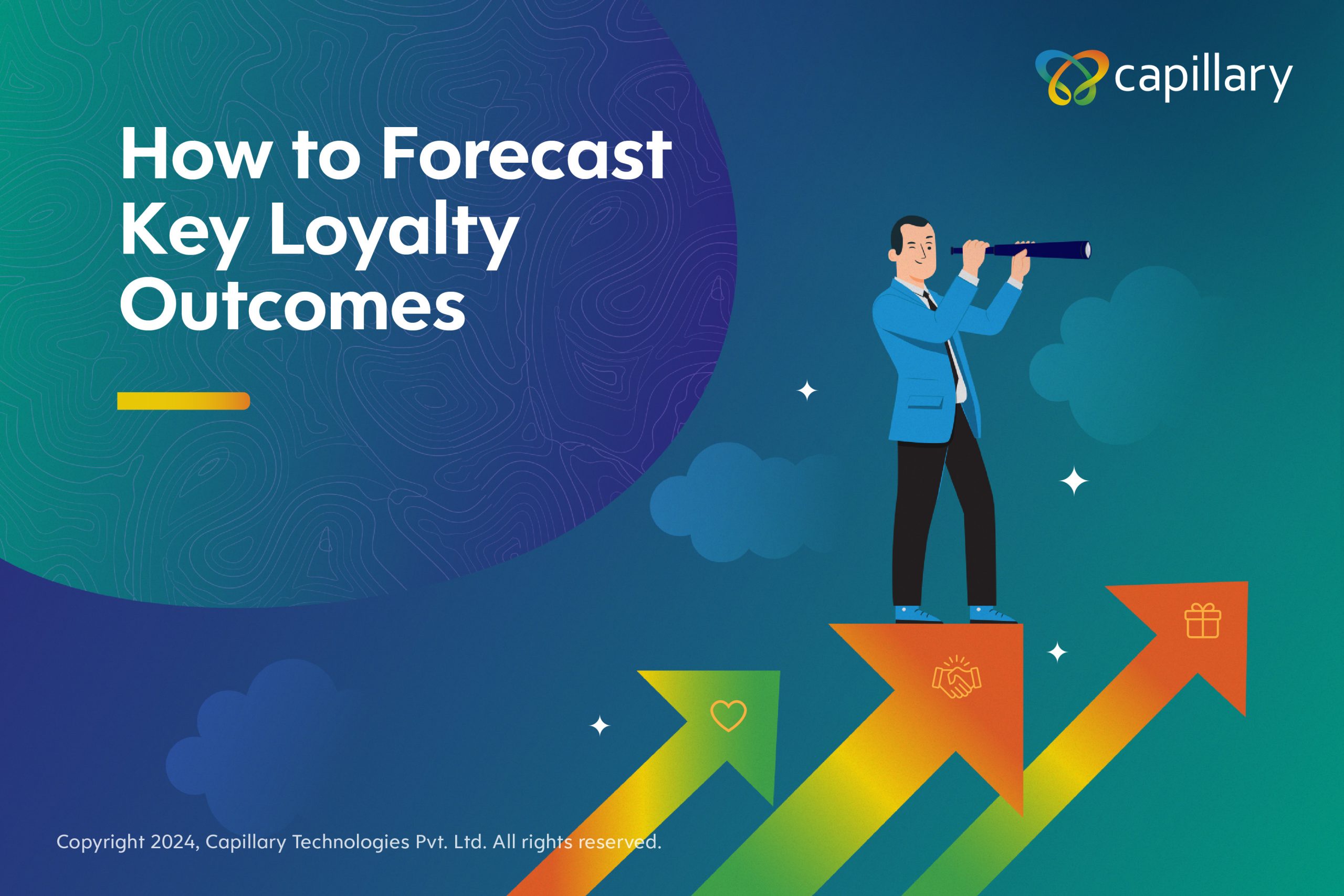- Design industry shaping loyalty programs
- Integrate easily and go live quicker
- Deliver hyper-personalized consumer experiences
Blue Rewards from Al Futtaim Group Shares Loyalty Success Stories and Evolution. Watch Podcast >
Capillary Announces 2nd Annual Captivate 2025 Summit: Transforming Loyalty Management with New AI Tech Read more >

Forecasting key loyalty outcomes is essential for businesses to retain customers and enhance engagement. By learning customer behavior prediction, companies can gain a competitive edge by understanding and predicting loyalty-signifying behaviors.
With loyalty data analytics and AI-powered forecasting, brands can anticipate spending habits, personalize experiences, and optimize rewards programs. The process involves analyzing historical data, identifying patterns, and using these insights to predict future behavior. Predictive customer retention methods are shaping the future of loyalty by allowing businesses to engage customers proactively, build trust, strengthen emotional connections, and drive long-term loyalty.
Drive loyalty program success with key loyalty KPIs and tracking the metrics that matter.
The importance of predicting customer behavior cannot be overstated. Customers often gravitate towards brands that recognize and reward their loyalty in a market crowded with options. This recognition can come in various forms, from personalized discounts to exclusive access to new products.
Achieving this level of personalization requires a deep understanding of what drives customer loyalty among your customer base.
Through predictive analytics and customer segmentation, businesses can gain the insights needed to forecast customer loyalty outcomes accurately. This allows for developing targeted strategies that resonate with different customer segments, fostering a sense of loyalty and encouraging long-term engagement.
To forecast key loyalty outcomes effectively, it’s crucial to start by understanding customer behavior. This involves collecting and analyzing loyalty data about how customers interact with your brand across various touchpoints. By leveraging loyalty analytics, businesses can identify patterns and trends that indicate loyalty, such as repeat purchases, engagement with customer loyalty programs, and positive feedback.
Key indicators of customer loyalty include:
Once customer behaviors prediction is established, businesses can tailor their strategies to reinforce these positive behaviors and address any areas of concern that might deter customer retention. This data-driven approach ensures that the brand remains responsive to customer needs and preferences, enhancing long-term loyalty.
Effective customer loyalty forecasting also relies on accurately segmenting your audience. Customer segmentation allows businesses to group customers based on similar behaviors, preferences, or demographics. This targeted approach ensures that marketing efforts and loyalty programs are more relevant and appealing to each segment, increasing the likelihood of engagement and loyalty.
Segmentation approaches that business can utilize are:
By understanding each segment’s unique characteristics and preferences, businesses can tailor their loyalty strategies to meet different customer groups’ specific needs and expectations. This personalized approach enhances customer satisfaction and fosters a deeper sense of loyalty.
Predictive analytics is a powerful tool for forecasting loyalty outcomes. By analyzing data and identifying patterns, businesses can predict future customer behavior with a high degree of accuracy. This insight enables companies to anticipate customer needs, personalize their marketing efforts, and optimize loyalty programs to maximize customer retention and engagement.
To effectively leverage predictive analytics, businesses should focus on:
This data-driven approach allows businesses to anticipate customer expectations and tailor their loyalty strategies for long-term engagement.
You can foster customer loyalty by creating hyper-personalized customer experiences. Personalization goes beyond simply addressing customers by name in communications. Hyper-personalization, driven by AI-powered customer behavior analytics, can enable brands to tailor every interaction based on the customer’s preferences, behaviors, and past interactions with the brand. This level of personalization makes customers feel valued and understood, significantly enhancing their loyalty to the brand.
To create truly personalized customer experiences, businesses should:
This AI-driven personalization strategy not only increases engagement but also reinforces long-term loyalty, as customers feel recognized and appreciated throughout their journey with the brand.
Forecasting customer loyalty outcomes and their practical applications is an ongoing journey that requires continuous learning. To further aid in this journey, we are thrilled to introduce our insightful whitepaper, “Loyalty Analytics: Introduction to KPIs & Metrics.” This comprehensive guide is designed to deepen your understanding of customer loyalty analytics, offering a closer look at the key performance indicators (KPIs) and metrics that matter most.
Drive loyalty program success with key loyalty KPIs and tracking the metrics that matter.
In this whitepaper, we delve into the specifics of measuring and analyzing customer loyalty, providing data-driven insights and actionable strategies to enhance your loyalty programs. Whether you’re just starting to focus on customer behavior prediction or looking to refine your existing loyalty strategies, this whitepaper is an essential tool, guiding you toward more informed decisions and long-term customer retention success.
To thrive in 2025, brands must go beyond traditional loyalty models and embrace customer behavior prediction to enhance customer retention. Data-driven insights empower businesses to craft hyper-personalized experiences, refine loyalty strategies, maximize engagement, and drive sustainable growth.
By embracing the insights and strategies outlined in this blog and the whitepaper and then leveraging AI-driven customer loyalty analytics and predictive customer retention methods, brands can build deeper emotional connections with their audience. The key to future-proofing loyalty programs lies in understanding customers before they make their next move!

February 14, 2018 | 4 Min Read
Indian Consumer Goods/FMCG distribution has always been a dy

May 6, 2019 | 4 Min Read
Sci-fi geeks previously mocked for their far-fetched ideas a

July 10, 2018 | 4 Min Read
Whether it’s the right set of songs on a Discover Weekly p